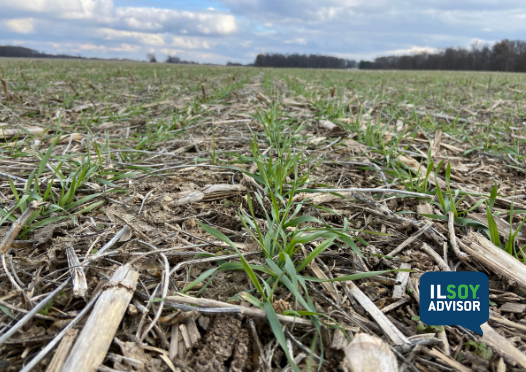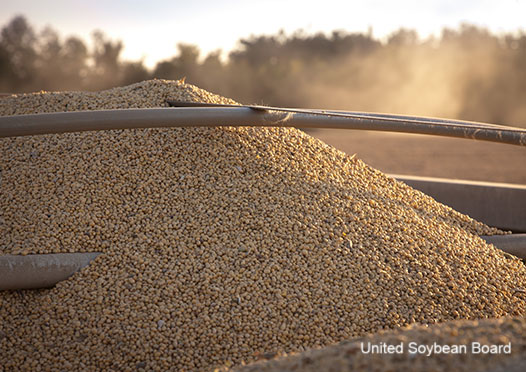ILSOYADVISOR POST
The Importance of Calibrating your Combines and Analyzing Your Yield Data
As harvest nears full swing in the Midwest and farmers are watching the yield data flow in on their monitors, there is little guidance on how to ensure that all the hard work of the season is recording properly in the cab. Yield monitors are an important tool for gaining knowledge about an operation and can connect the dots when managing hybrids and fertility based on soil variability. The biggest area of confusion with setting up yield monitors and using them is that not all yield data is quality data. Oftentimes confusion surrounds why the data is not reflecting what is seen in the field. It is important to take the time to calibrate your combine yield monitor to ensure your yield data is accurate and usable. Although the colors that show up on the yield map look convincing, these colors are dictated by how the combine has been told to read the data and that is why calibration is so important.
When approaching calibration, there are five main areas of focus; cart weights, flow rates, moisture sensor readings, the temperature sensor, and the zero-flow combine vibration sensor. Oftentimes these factors call for multiple calibrations throughout the season as one of these variables changing could alter the data quality.
When calibrating your grain cart weights, be sure to check that your weight sensor is working by checking the actual weights from a scale. If your grain cart sensor is not working properly this can add more inaccuracies into the yield data.
The yield monitor calculates yield by measuring the amount of flow through the combine. Manipulating the flow rate can be accomplished by increasing or decreasing speed in the field. It is important to collect scale weights at different speeds in the field and calibrate accordingly. This can be done by harvesting at a chosen speed and maintaining that speed for the entirety of the load, then obtaining a scale weight to enter into the monitor. Repeating this process at different speeds allows the monitor to determine the change in flow rate effectively and use that flow rate to estimate yield. Some monitors will allow a single load calibration, however the more calibrations that are done on flow rate, the more accurate it will be. It is highly recommended that five or more calibrations for flow rate are done for accuracy. It is important to pick a consistent area in the field and not end rows or areas with severe crop damage. If the flow rate is inaccurate, the yield will record improperly and cause irregularities in the map.
Grain moisture is often overlooked in the calibration process but is one of the most important variables with yield accuracy. As the season progresses and the field dries down, be sure to re calibrate the moisture sensor in your monitor as this is used by the machine to estimate yield. This can be done by checking the observed moisture in the field and entering that into the monitor for calibration. With any shift in moisture over 2.5 percent, there should be a recalibration.
The temperature sensor should also be calibrated at the beginning of the season and is done by verifying the temperature outside to what is being recorded on the monitor. This should be performed when the sensor has not been in direct sunlight and when the combine is empty. The ideal time to do this would be first thing in the morning before starting the day.
Vibration calibration should also be done at the beginning of every season. To perform this calibration the combine will need to be empty and running. Run the combine at full engine RPM with the header in operating position. With the vibration calibration window open, you can then allow it to calibrate for you. The monitor will record this information and take the operation vibration into account when figuring yield.
When all calibrations are tended to, the monitor will reflect the proper yield maps based on every calibration variable. It is important to note that yield monitors are an estimate of yield based on equations that are created from these inputs. Obtaining an accurate yield map will allow for a stronger planning process for the next growing season and provide insights into soil health and fertility, disease and insect management from year to year, and hybrid performance across the operation.
In your fields. By your side.
In agricultural production, conditions change from day to day and acre to acre. That's why Simplot Grower Solutions is here to deliver exactly what you need, where you need it and when you need it. Local advisors are ready to provide supportive service, detailed data and preferred products, as we work tirelessly by your side and in your fields. Consider our talented team as true partners and a one-stop resource with a multi-platform approach to help you secure success every season.
To learn more about Simplot Grower Solutions products and services please check out our website, simplotgrowersolutions.com.




Comments
Add new comment